There are so many types of squash! This winter squash guide walks you through what you need to know about choosing, storing, and cooking common varieties.
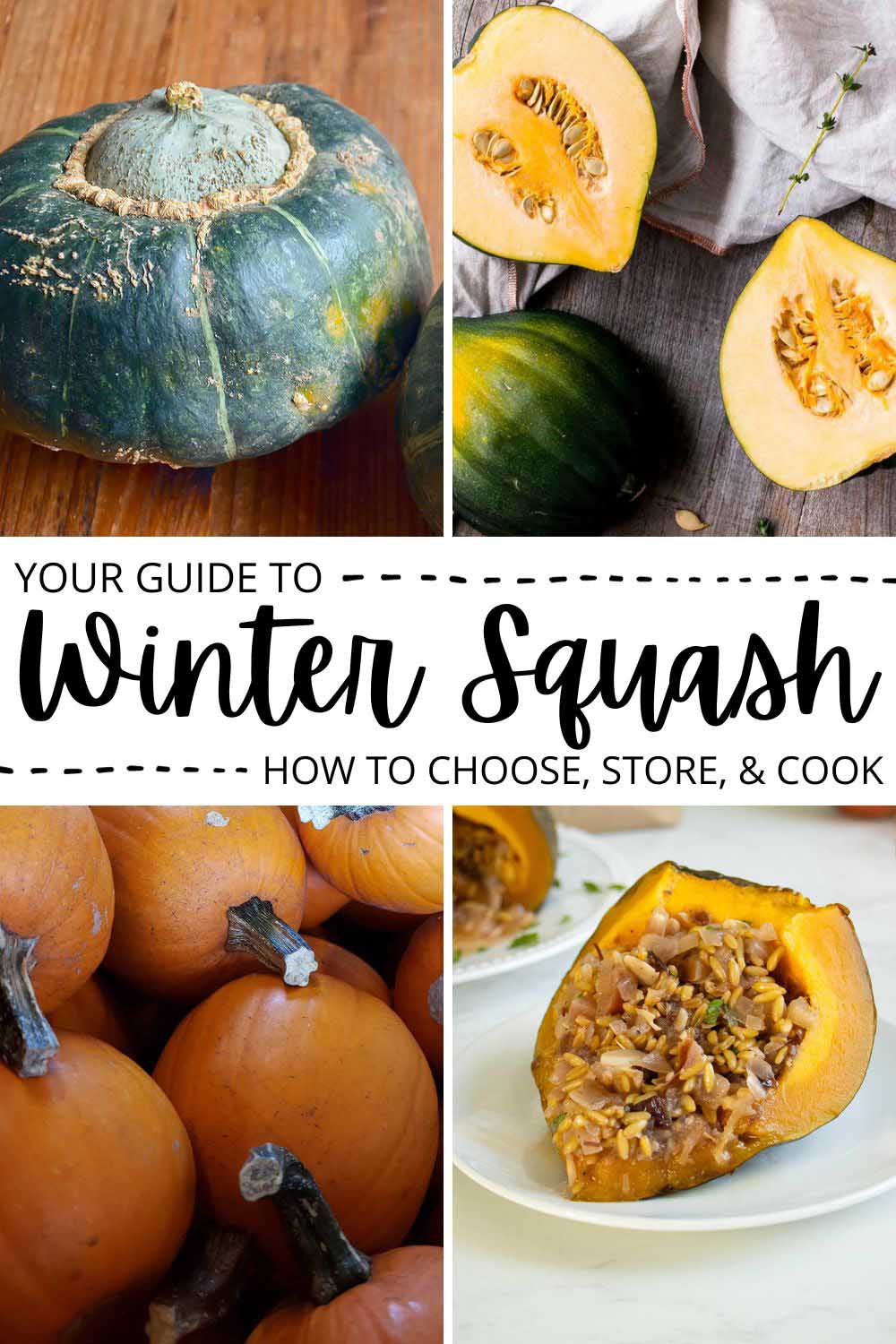
Jump to:
One of my favorite things about this time of year is scooping up the amazing winter squash at the farmers market and grocery store. I love how they look sitting on my kitchen counter, and of course I love to eat them.
This alphabetical, visual guide to winter squash will help you make the most of the fall and winter bounty.
Common types of winter squash
There are dozens of types of winter squash out there. Below is a guide to seven of winter squash varieties you're most likely to find at farmers markets and grocery stores.
When you're shopping for winter squash, there is one common thing to look out for. Cosmetic blemishes and irregular bumps on the skin are generally fine. What you should avoid are squash with bruises or soft spots -- those are signs that they're starting to rot.
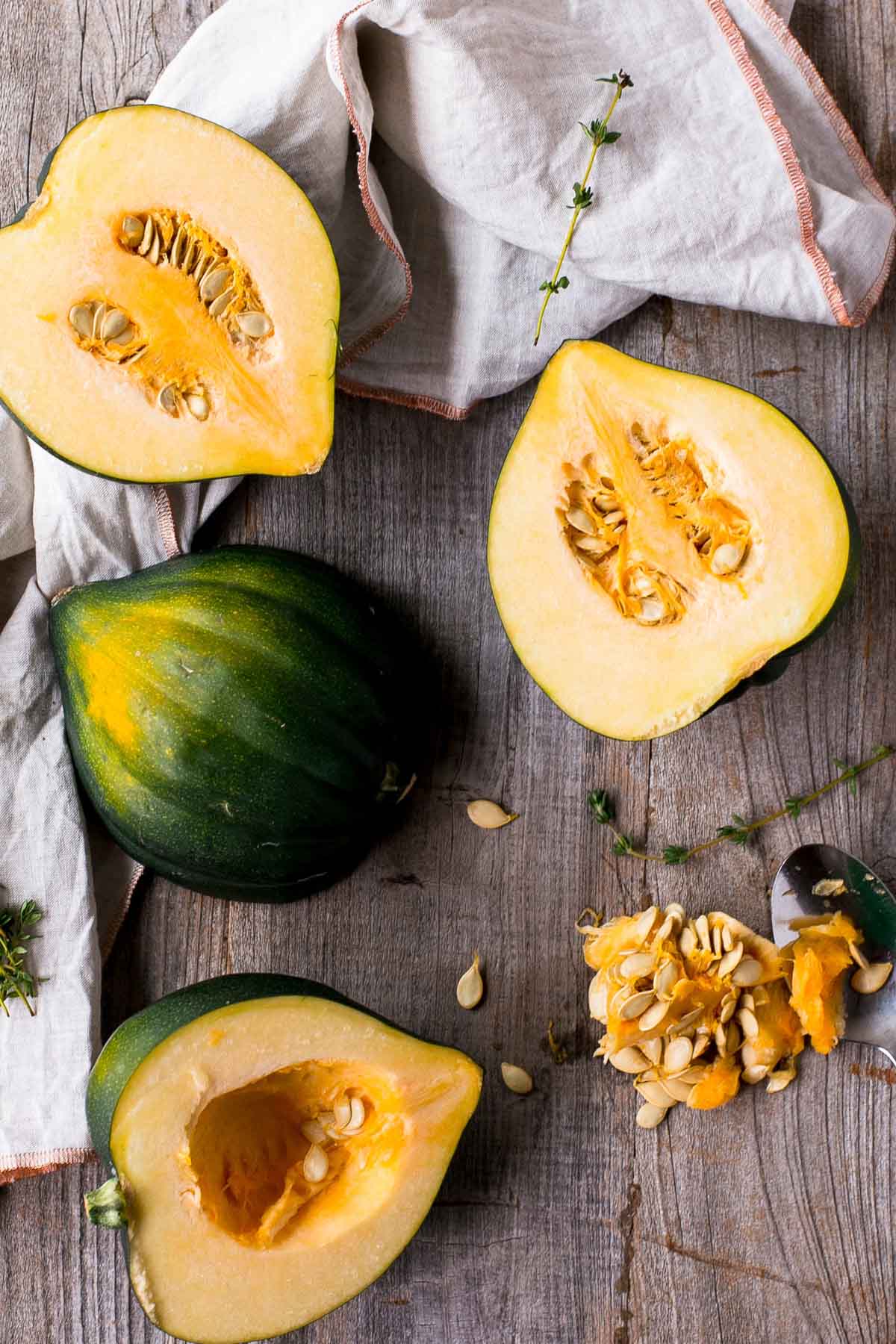
1. Acorn squash
How to choose it: With many veggies, green equals unripe, but when it comes to acorn squash, green is a-OK. A good acorn squash is a deep green with an orange spot on one side.
There is an acorn squash variety that is mostly yellow-orange, so don’t shy away from a predominantly orange acorn squash! Just make sure there are no bruises or soft spots on it.
Cooked acorn squash has a tender texture and a lightly sweet, almost nutty flavor. It's great for stuffing and roasting!
How to cook it: The easiest way to cook acorn squash is roasting it in the oven. Just halve it, scoop the seeds, rub the halves generously with olive oil and bake at 425° Fahrenheit for 20 to 25 minutes, depending on the size of your squash.
If you want to get fancier, try Amy's amazing stuffed acorn squash recipe!
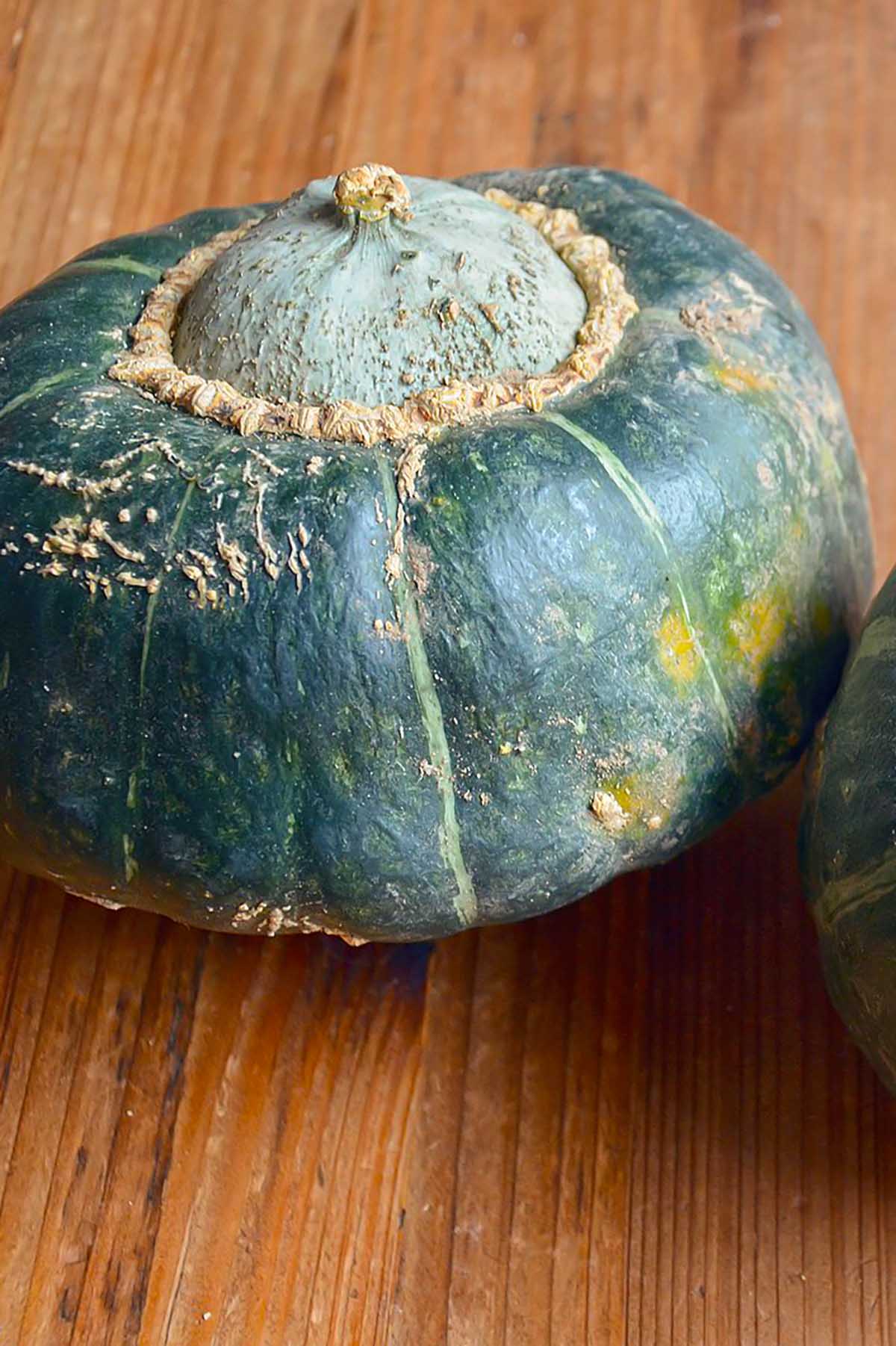
2. Buttercup squash
How to choose it: This is another dark green squash, but buttercup squash has pretty pale green or off-white vertical stripes and a more boxy shape than other winter squash you'll encounter. They also have a distinctive "button" on the end, as you can see in the photo above.
Buttercup squash is closely related to kabocha pumpkin, but kabocha squash has a more dense texture. Both have a starchier flavor and texture than many other winter squash varieties.
This squash can be a little bit bumpy or blemished, but don’t let that stop you unless the bumps are soft or squishy.
How to cook it: Buttercup squash cooks up like acorn squash or kabocha pumpkin, so any recipe calling for those will work. This simple roasted buttercup squash recipe is a great place to start.
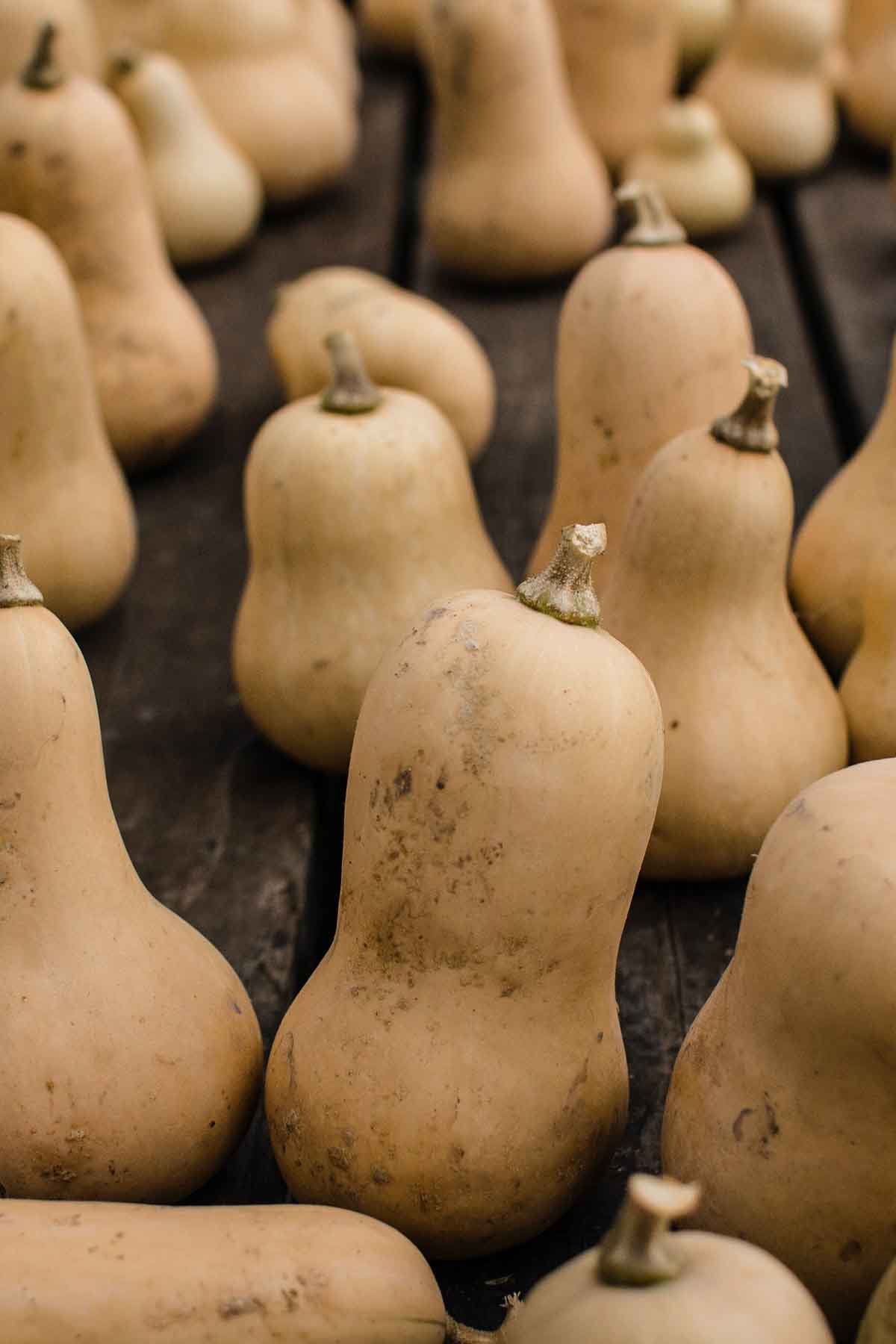
3. Butternut squash
How to choose it: A good butternut squash has a yellow skin and no soft spots or bruises. If you want a sweeter squash, look for a butternut that has more orange coloration on the skin. Just make sure there are no soft spots—that indicates rot! Some blemishes are okay, as long as they’re not soft.
Butternut is probably the most common winter squash, because it’s so versatile. You'll be able to find it at almost any grocery store.
Butternut squash is tender with a pretty neutral flavor. It is often used in place of pumpkin in recipes and even in canned pumpkin, because the flavor is so similar.
How to cook it: Bake it, air fry it, roast it, make a soup or make a puree to use just like pumpkin puree.
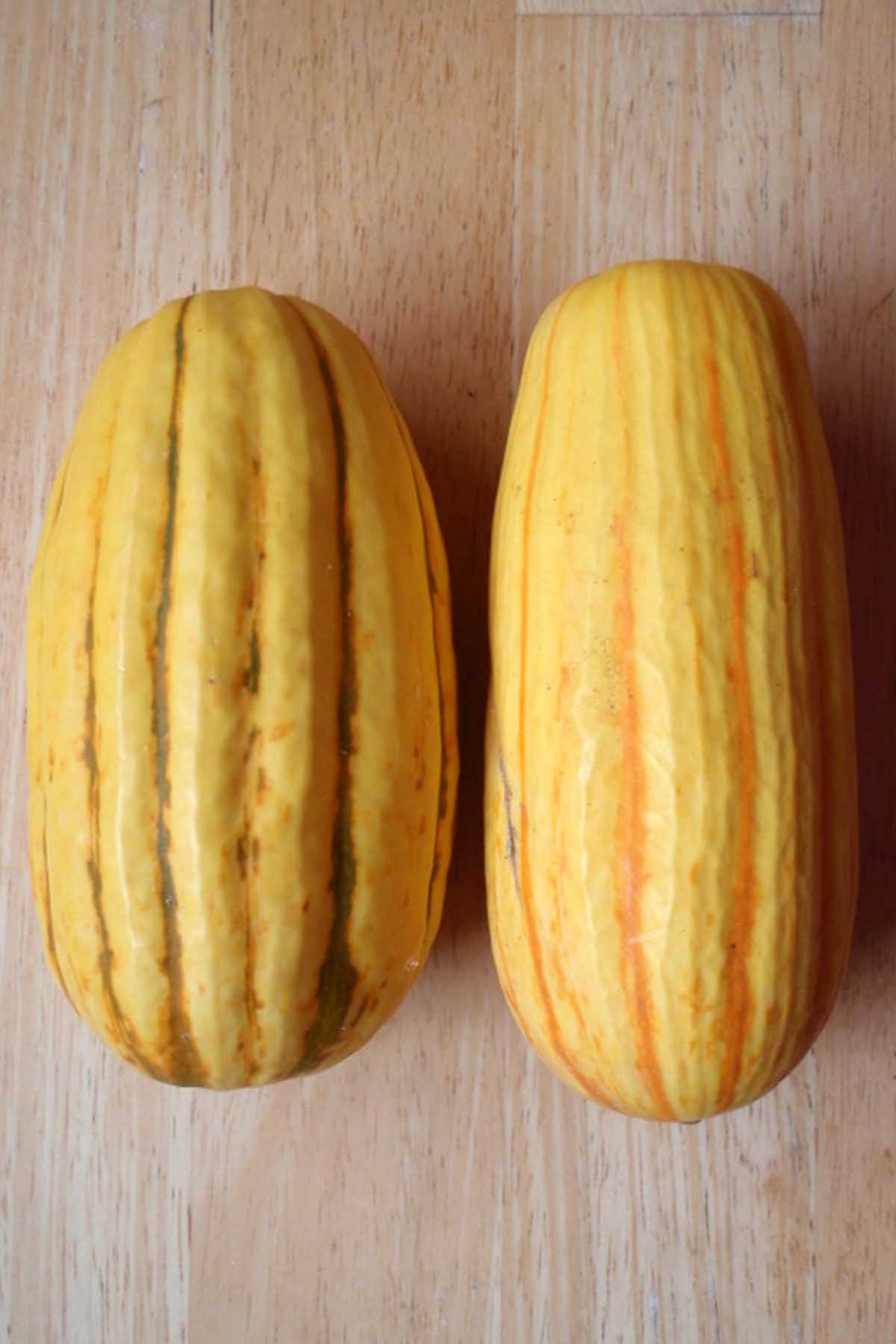
4. Delicata squash
How to choose it: Delicata squash are bright yellow in color with imperfect skin and dark green or orange, vertical stripes along its body. As long as the bumps and blemishes aren’t soft, you’re good to go.
Delicata squash has a lovely, creamy texture and sweet flavor.
How to cook it: You can cook delicata squash similarly to butternut squash. In fact, some people say that delicata is butternut squash’s more delicious cousin.
If you need a recipe to get you started, I recommend Cadry's roasted delicata squash. You can make it in the oven or the air fryer!
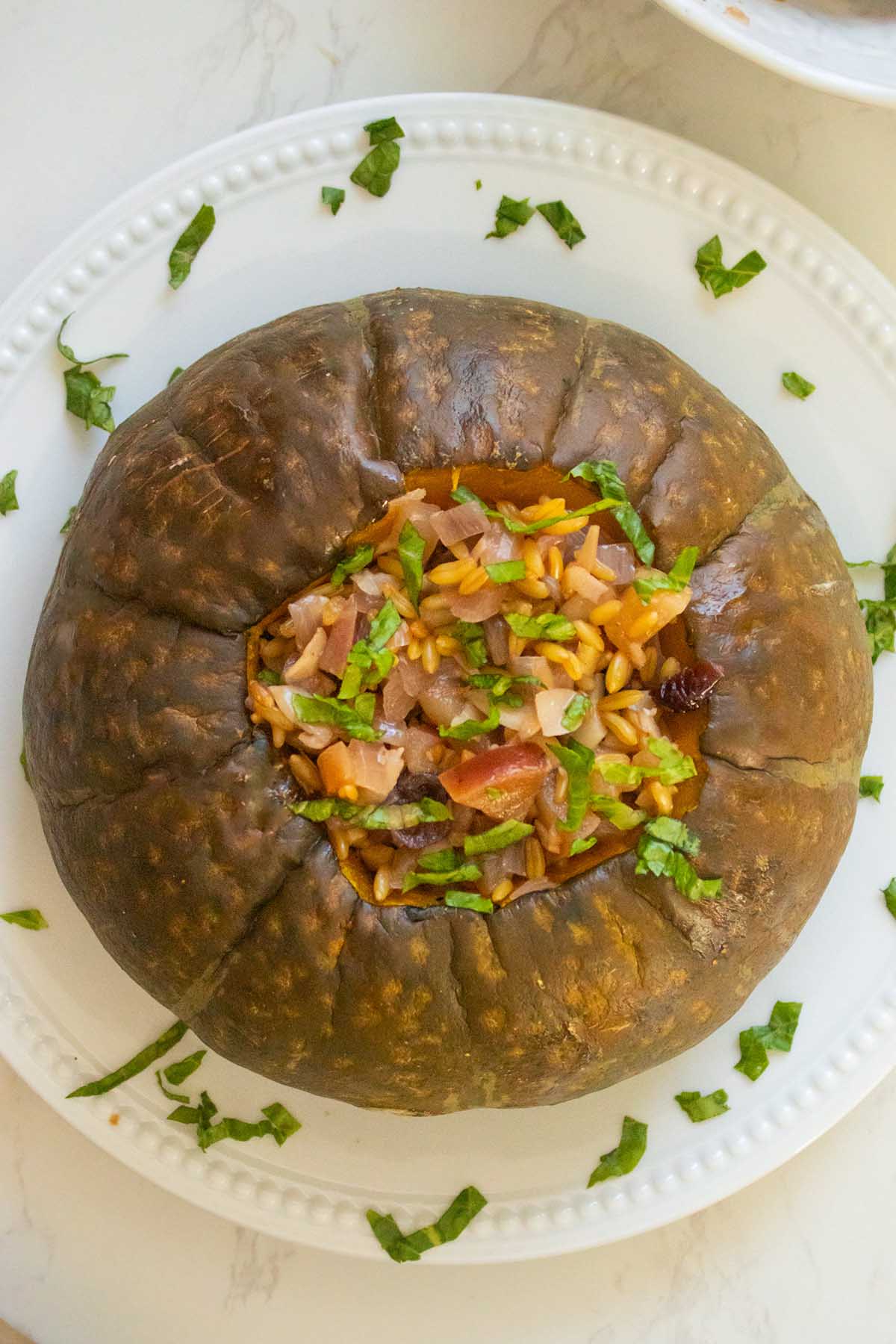
5. Kabocha pumpkin
How to choose it: Like acorn squash, kabocha pumpkins are a lovely, dark green color, but some yellow or orange on the skin is fine. They should feel heavier than they look when you pick them up and be bruise-free, though some blemishes are okay as long as they aren’t soft.
Kabocha pumpkin -- also called kabocha squash or Japanese pumpkin -- is my favorite variety of winter squash! It has an amazing, dense texture and starchy flavor that is just irresistible.
How to cook it: Try my stuffed kabocha pumpkin! It's packed with an amazing ginger-apple whole grain stuffing.
You can substitute acorn squash or buttercup squash for kabocha pumpkin in any recipe.
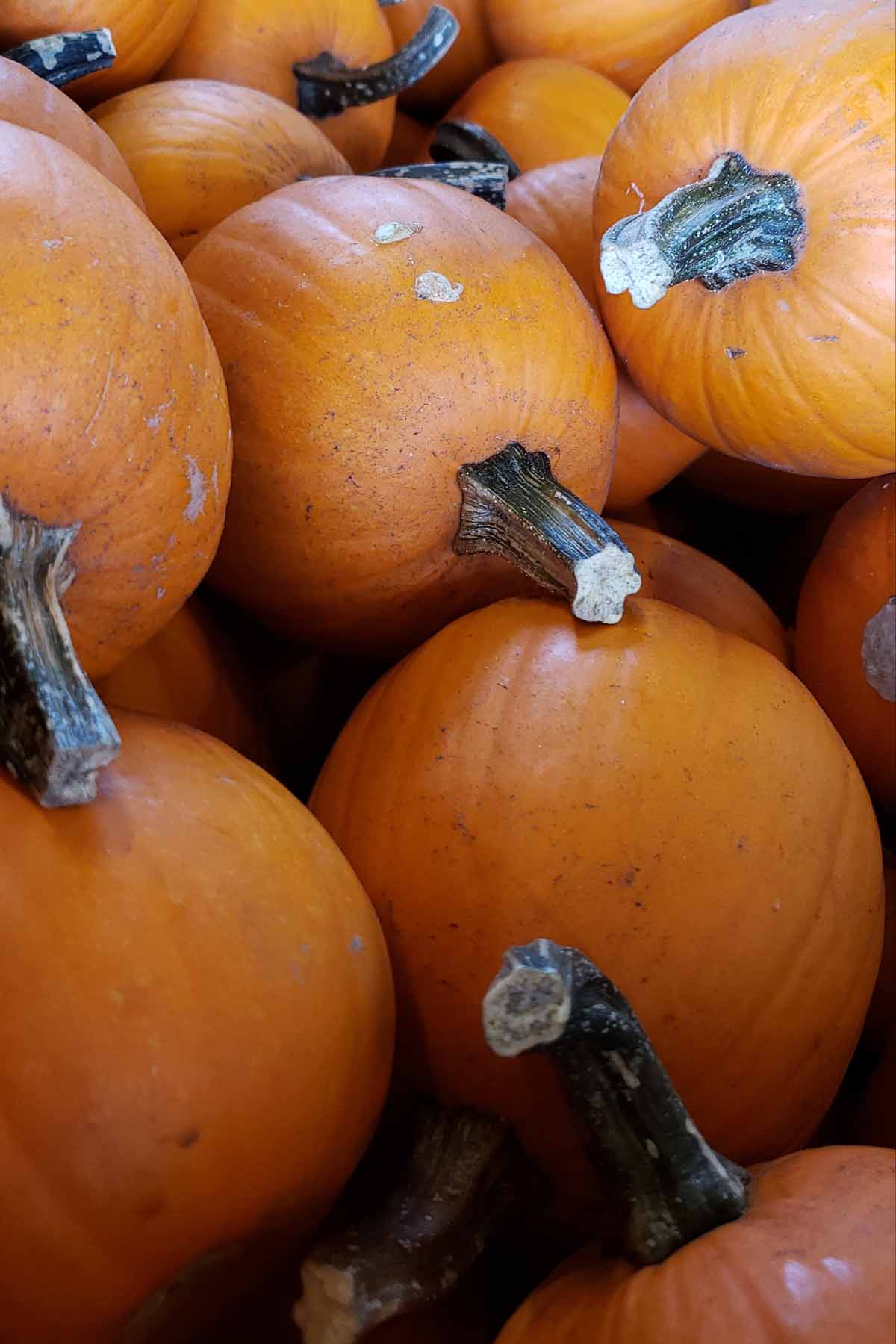
6. Pie pumpkin
How to choose it: Pie pumpkins are smaller than the carving pumpkins you use to make Jack-o-lanterns. They’re deep orange in color and should be free of soft spots. Blemishes are okay.
Pie pumpkin has a pretty neutral flavor and creamy texture, like pumpkin puree.
How to cook it: The most common way to prepare pie pumpkin is to make a puree that you can use in any recipe that calls for pumpkin puree. I really like Gwen's method for making pumpkin puree.
You can use your puree right away or freeze it in an ice cube tray and store the cubes in a freezer safe container. This method is great, because one ice cube is two tablespoons. That makes it easy to defrost just as much as you need!
Use your puree to make pumpkin soup or creamy baked pumpkin orzo!
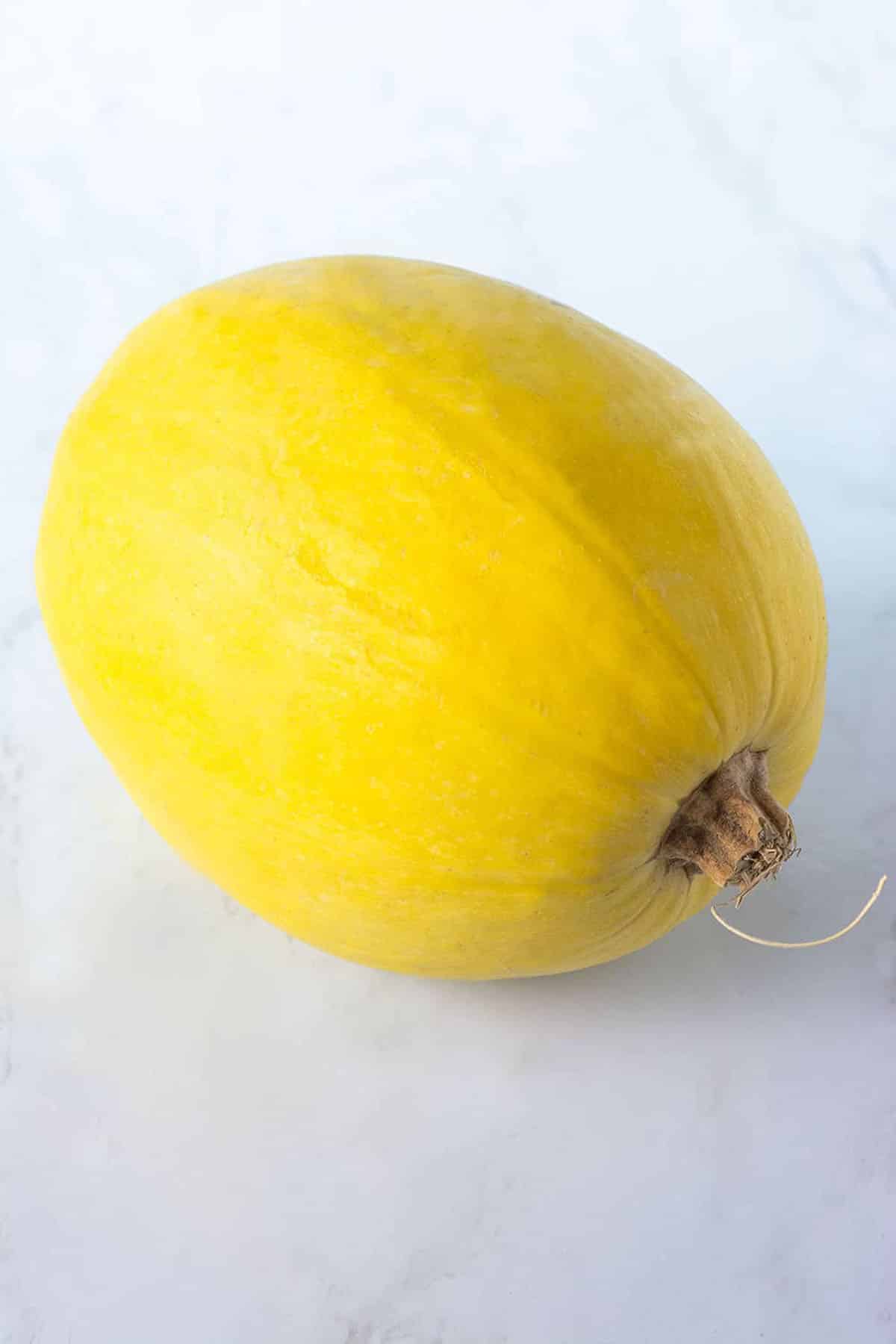
7. Spaghetti squash
How to choose it: This fun squash can range in color from a yellowish off-white to light orange in color. Some blemishes are okay, as long as they’re not soft.
Spaghetti squash is very different in texture from other varieties of winter squash, like butternut or acorn. When you slice a spaghetti squash open, the inside is full of tender strands that give this winter squash variety its name.
This squash has a pretty neutral flavor, and the texture of the strands is very fun and unique!
How to cook it: You can serve spaghetti squash raw or cooked.
To prepare raw spaghetti squash, gently scoop it out of the rind, and marinate it in your favorite vinaigrette for 30 minutes or so. Top with spaghetti sauce!
If you’d rather go the cooked route, you can’t lose with Michelle's Instant Pot spaghetti squash or Jackie’s oil-free arugula pesto over spaghetti squash!
Winter squash nutrition
Not only is winter squash beautiful and delicious, it’s so, so good for you. Like other orange-fleshed fruits and veggies, winter squash is a great source of vitamin A. It's also got vitamins C, B6, magnesium, potassium and even a little bit of protein!
The starch and fiber in winter squash also has insulin regulating properties.
How to store winter squash
If you’re planning to store winter squash for a long period, cured is best. It’s a pretty sure bet that grocery store squash is cured, but you may want to ask at the farmers market.
To cure squash, you sit it out in the sun for seven to 10 days. Squash needs to be cured as soon as it’s harvested.
You store cured and uncured squash the same way, but cured will keep much longer.
Store your squash in a cool, dark place, making sure that there is space between them. If they’re touching each other, they can rot at the point of contact. Properly stored, cured squash will keep for months!
Check in on your squash often. Bruising is the first sign that winter squash is starting to turn. If you notice any bruising, slice the bruised parts away, and cook the rest up ASAP.
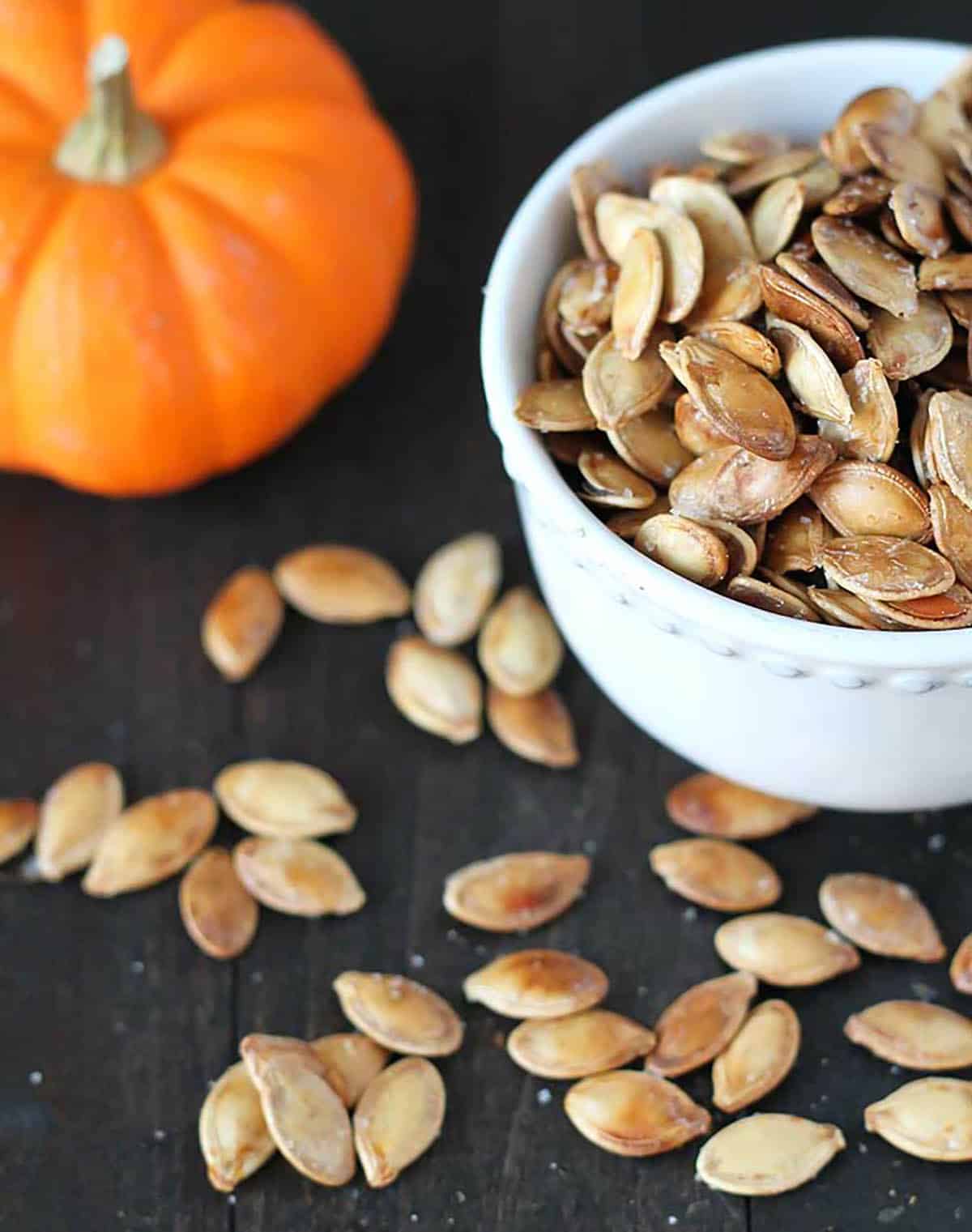
How to cook squash seeds
Before you cook most types of winter squash, you have to scoop the seeds out. Don't throw them away, though. Pumpkins aren’t the only winter squash with edible seeds!
Winter squash seeds of all kinds are lovely baked in the oven using your favorite roasted pumpkin seed recipe. If you don’t have a favorite, my friend Gwen at Delightful Adventures walks you through it in detail.
Want to cook squash seeds in the air fryer? Cadry's Kitchen has you covered!
Frequently asked questions
Winter squash are the hardy squash varieties that mature in the fall and winter. They typically have thick skins, large seeds, and a somewhat starchy texture, though how starchy they are varies by type.
This is different from summer squash, like zucchini, which has a thin skin and small, tender seeds that don't need to be scooped out before cooking.
This can really depend on your personal tastes, but to me, kabocha squash is the star of the winter squashes. Its dense, starchy texture is just so satisfying! If you like a more mild, sweet squash, you might prefer something like a delicata or butternut squash instead.



Got a question? Tried this recipe? Leave a reply!